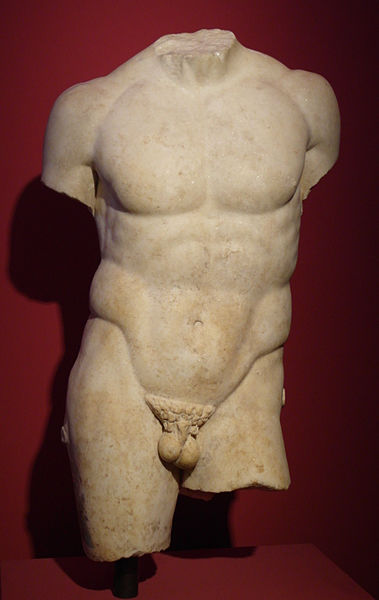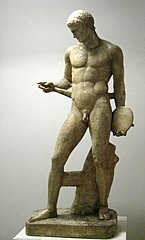Discophoros, Earliest – Athlete With Discus Torso
source: Wikimedia Commons
author: Rowanwindwhistler
Description
A photograph shows a marble sculpture of a nude torso. Both arms are missing below the shoulders and the legs are broken off at the thighs. The head has broken off near the base of the neck as well.
Date
Artifact: c. 2nd century AD
Photo: May 2016
Information
This is the oldest known reproduction of Discophoros, a series of Roman marble copies of a Greek bronze work thought to originate from the 4th century BC. Though this reproduction is missing the head and all four limbs, later copies include more of the limbs and a discus held in the left hand, allowing modern reproductions to be more detailed. The range of both ancient and modern copies of the statue, many of which take some liberty with its form, have led to quite a number of variations of the work. Other variations are linked below.
In more complete reproductions of the statue, the athlete holds in his left hand a Greek discus, which was used in the discus throw. This was one of the five sections of the pentathlon, an event featured in the ancient Olympic Games and other Panhellenic festivals.
Other Copies
Related Articles
Greek Discus | Greek Pentathlon | Ancient Olympic Games | Panhellenic Games
[raw_html_snippet id=”bib”]
Scanlon, T. F. (2014). Sport in the Greek and Roman worlds. Vol 1. Oxford: Oxford University Press.
Zarnowski, F. (2013). The pentathlon of the ancient world. McFarland.
[raw_html_snippet id=”endbib”]



